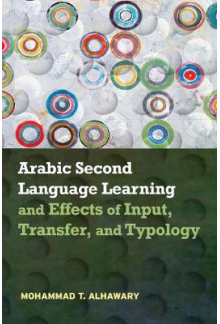- Home
- Academic & Professional Literature
- Humanities
- Linguistics
- Arabic Second Language Learning and Effects of Input, Transfer, and Typology
Mohammad T. Alhawary
Arabic Second Language Learning and Effects of Input, Transfer, and Typology
Voted 0
ISBN: 9781626166479
Author : Mohammad T. Alhawary
Published: 2019
Publisher: Georgetown UP
Number of pages: 223
Language: English
Format: Paperback
Author : Mohammad T. Alhawary
Published: 2019
Publisher: Georgetown UP
Number of pages: 223
Language: English
Format: Paperback
Full price:
60.00 €
- % When buying online
Price:
Whe don't have this product
Delivery in Lithuania within 2-6 weeks
Delivery in Lithuania within 1-4 working days
Delivery in Lithuania within 2-6 weeks
Delivery conditions
Description
In 2010, Alhawary published Arabic Second Language Acquisition of Morphosyntax, which provided empirical data on Arabic second language acquisition (SLA) strategies. This proposed book follows the volume, using data to delve into issues of input, transfer, and typology. Alhawary’s book relies on Arabic as a second language (L2) data from speakers whose first languages (L1s) are Chinese and Russian and aims to answer the following questions: How do adult Arabic L2 learners come to know about the combinatorial properties of morphemes, words, phrases, and clauses? Do they develop L2 knowledge systematically or randomly? Can they acquire the same range of syntactic and morphological knowledge as native speakers and to what extent? What are the developmental stages or paths, if any, along which Arabic L2 learners progress? What is the role of the native language in learning Arabic a second language? To what extent can input exposure override or minimize the effect of the native language and at what proficiency level? What evidence do the present data provide on the role of a second language (on that of another) and posited claims about such a role? What are other factors that have a bearing on learning Arabic as a second language? Answers will help teachers of Arabic and linguists seeking to understand and develop better methods for teaching Arabic.
Alhawary makes a new contribution to the field of Arabic second language acquisition by examining Arabic second language acquisition data from two novel typological language pairings, namely adult L1 Chinese- and Russian-speaking learners of Arabic.
Reviews (0)
Write a review

